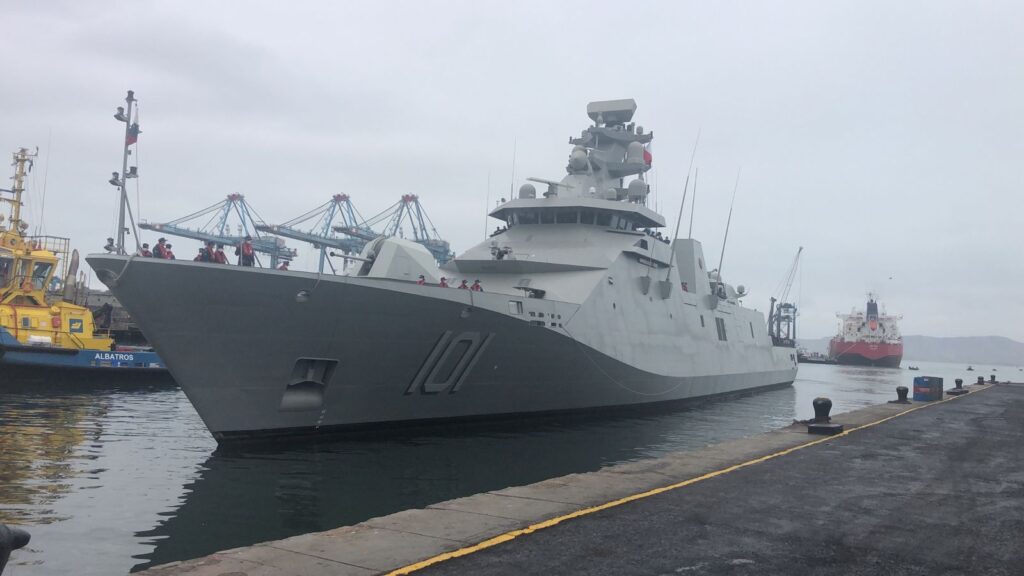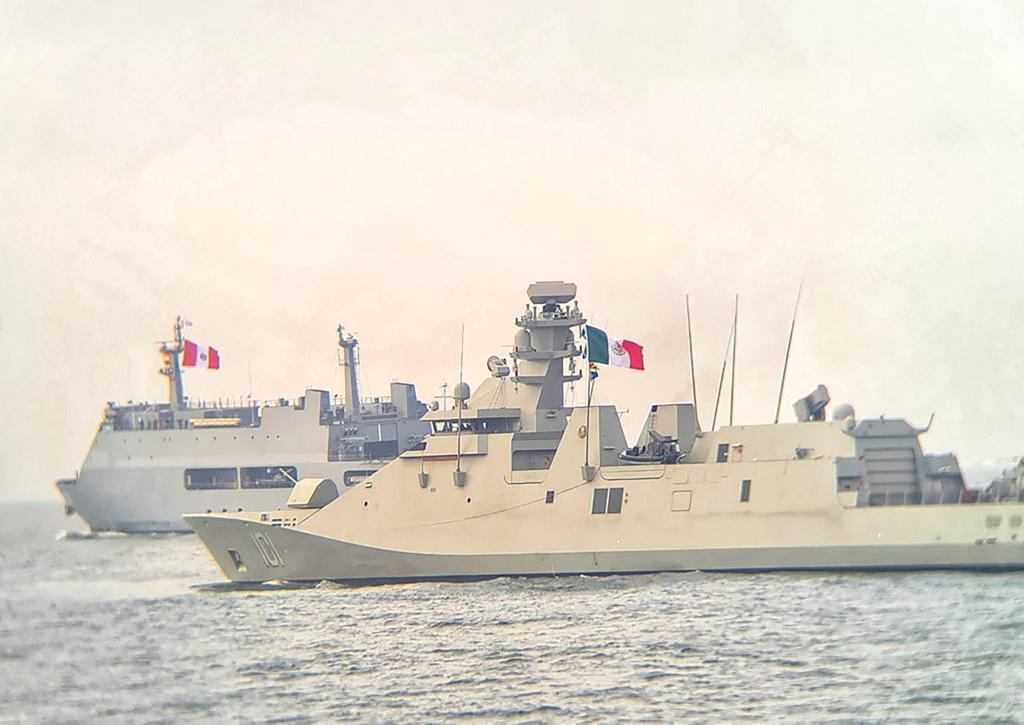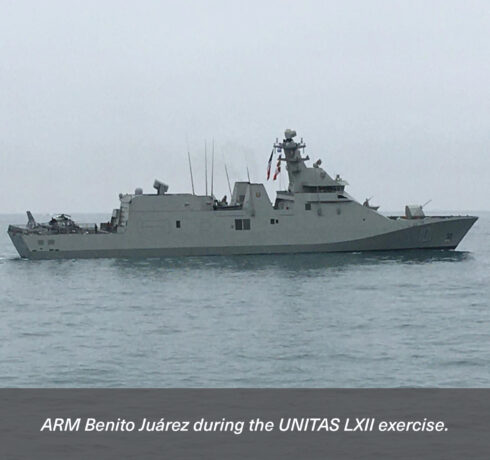The Mexican frigate ARM Benito Juárez has successfully participated in three international exercises in Latin America. The ship (formerly ARM Reformador) was even assigned a leading role. According to Naval Sales Support Manager Michiel van Ginkel, the exercises were the first real operational test for the SIGMA frigate, during which it could measure itself against other ships in an international fleet and also practice all aspects of maritime warfare. “The crew, but also the entire Mexican Navy, is very proud of the performance of ARM Benito Juárez,” said Michiel. “I know that such an experience has a big impact on a crew, not to mention that it is of course wonderful to carry out exercises with your ship in an international setting like this.”
The multinational naval exercises took place in September and October. Besides the five Latin American countries Colombia, Chile, Ecuador, Mexico and Brazil, the United States and France also participated. The exercises were SIFOREX, UNITAS LXII and SOLIDAREX II. The first two were held in Peruvian waters. Peru was the host country, coinciding with the celebration of the bicentenary of its navy. These two exercises continued in Ecuadorian and Colombian waters under the name SOLIDAREX II.
 The highlight of the participation of ARM Benito Juárez was the leading role that the ship received in the exercise UNITAS LXII.
The highlight of the participation of ARM Benito Juárez was the leading role that the ship received in the exercise UNITAS LXII.
It was the first time since the transfer of ARM Benito Juárez early last year that the SIGMA frigate participated in major international exercises. Plans to participate in another major international exercise (RIMPAC) in 2020 could not go ahead due to the corona pandemic. “The ship performed very well from the outset,” says Michiel, who was involved in the negotiations with the Mexican Navy in the run-up to the contract signing for the construction of ARM Benito Juárez. “During SIFOREX, the ship participated very successfully in detecting and fighting submarines, so-called Anti-Submarine Warfare. Using her towed array, the frigate detected participating submarines. That went very well.”
“The Mexican Navy calls this frigate the most advanced ship of its fleet of 186 ships." Michiel van Ginkel
A towed array is a variable depth sonar in the form of a detection cable combined with an active array – a so-called fish – that is towed behind the ship. With such a VDS, a naval vessel can both receive and transmit signals. The highlight of the participation of ARM Benito Juárez was the leading role that the ship received in the exercise UNITAS LXII, which followed SOFIREX. This international exercise was held for the sixty-second time. “The Mexican frigate was allowed to lead a number of parts of the exercise within the fleet,” says Michiel.
“The ship was in command of a task force that had to prepare and execute a large humanitarian aid operation. During this HADR (Humanitarian Aid and Disaster Relief) operation, a helicopter of ARM Benito Juárez was used to carry out medical evacuation flights. In addition, the SIGMA frigate also acted as Electronic Warfare Coordinator and was involved in Special Forces operations.”
 It was the first time since the transfer of ARM Benito Juárez early last year that the SIGMA frigate participated in major international exercises.
It was the first time since the transfer of ARM Benito Juárez early last year that the SIGMA frigate participated in major international exercises.
The large-scale military exercises were followed with great interest in Mexico. According to Michiel, ARM Benito Juárez has proven to be a “very capable” ship. “The Mexican Navy calls this frigate the most advanced ship of its fleet of 186 ships. It is wonderful that the ship has been able to demonstrate its qualities for the first time in the international military stage. It has proved itself to be perhaps the most capable of all the participating ships, after that of the United States. I think the Mexican Navy is even more proud to have participated with ARM Benito Juárez because the ship was built locally, in Mexico itself.”
ARM Benito Juárez was modularly built in an ultra-short time of three years at the Astimar 20 shipyard in Salina Cruz. Construction began in 2017. Under the direction of Damen Naval, the vessel was composed of a total of six modules, four of which were built in Salina Cruz. The two remaining modules were built in-house by Damen Naval in Vlissingen, namely the module for the power plant and the one for the bridge and command centre with the associated sensors and combat systems. The 107.5-metre long and 14-metre-wide frigate, officially named Patrulla Oceánica de Largo Alcance (POLA), was built according to the successful SIGMA concept, invented by Damen Naval.
Another Damen-built vessel also took part in the festivities surrounding the exercises in Latin America: the Brazilian Navy’s training ship Cisne Branco (White Swan). This tall ship was built at Damen Shiprepair Oranjewerf in Amsterdam and delivered in 2000. It is virtually a copy of the Dutch three-master Stad Amsterdam.
 ARM Benito Juárez was modularly built in an ultra-short time of three years at the Astimar 20 shipyard in Salina Cruz.
ARM Benito Juárez was modularly built in an ultra-short time of three years at the Astimar 20 shipyard in Salina Cruz.

